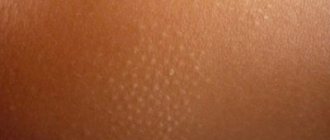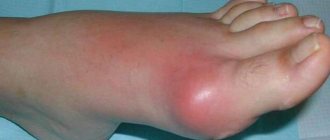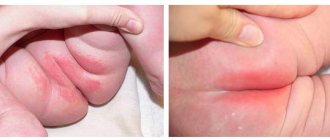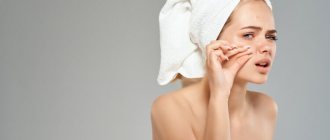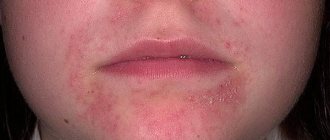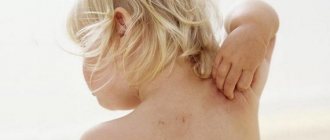Why do acne appear on the body?
Main reasons:
- Allergy. This could be the body’s reaction to a certain food product, household chemicals, children’s cosmetics, medications, or low-quality diapers. In this case, the rash may differ in appearance. Pink or red spots, single or numerous pimples, as well as a rough, continuous surface may appear.
- Infectious diseases. There are many diseases, the symptom of which is the appearance of rashes. The most well-known diseases include scarlet fever, measles, chickenpox, rubella, and rotavirus.
- Impact of external factors. Such reasons include the bite of an insect, mechanical damage, the effect of various irritants on the skin: diapers, diapers, when they are soaked in liquid feces, urine or sweat.
- Hormonal imbalance. A skin rash in newborns may appear due to blockage of the sebaceous glands, which occurs due to the immaturity of the small organism and the child’s adaptation to life in unusual conditions.
A newborn has hormonal rashes on the face
Pyoderma in a child
Vesiculopustulosis
The pathology is characteristic of the neonatal period. Vesiculopustelosis is an inflammatory process in the area of the mouth of the sweat gland. The formation of pustules in a child is preceded by prickly heat. As a result of infection, the elements of prickly heat become inflamed and transform into pustules with a milky-white secretion. The rash is located on the skin of the scalp, torso, and in folds.
Pemphigus of newborns
Neonatal pemphigus occurs on days 3-15 of a child’s life. It is characterized by the appearance of conflicts (bubbles) ranging in size from a pea to a walnut, filled with cloudy contents. The typical location of blisters is on the abdomen, perineum, and in the umbilical area. After conflict resolution, wet erosion remains. The general condition of the baby is usually disturbed: there is fever, lethargy, and loss of appetite.
Ostiofolliculitis. Folliculitis
Ostiofolliculitis is an infection of the mouth of the hair follicle; it has an acute onset: pustules penetrated by hair appear on an unchanged skin background. The favorite localization of rashes is the head, chest, and limbs. After a few days, the pustule resolves and becomes covered with a crust, which leaves behind a pink spot.
When the process spreads to the entire follicle, folliculitis develops. The area of inflammation increases in size and becomes painful. After a week, the abscess dries out without leaving a scar. If the infection penetrates into the subcutaneous layer, a boil forms. A conglomerate of boils is called a carbuncle. Opening a carbunculous pustule leaves deep scars.
Impetigo
There are several types of pathology. Streptococcal impetigo is characterized by the formation of conflicts on the face with a purulent-serous secretion, which open after 3-4 days without leaving a scar. Slit impetigo is also called “jam”. It represents maceration, linear erosions at the wings of the nose, in the corners of the mouth, and eyes. In the bullous form of pyoderma, pustular rashes are localized on the skin of the hands and lower extremities.
Papuloerosive streptoderma
Diaper dermatitis occurs only in children under one year of age, more often in the neonatal period. In the anogenital zone, on the inner surface of the thighs, dense bluish papules with an inflammatory halo form. Papules transform into blisters, then into erosions and crusts. The elements appear against the background of maceration, irritation of the skin by feces.
Intertriginous streptoderma
Often streptoderma occurs in children with lipid metabolism disorders. Rashes appear in the area of large folds: inguinal, cervical, axillary, buttock. The rash consists of blisters that, when resolved, leave weeping erosions with scalloped borders.
Erysipelas
The disease affects young children. The predominant localization is the neck, limbs, face. An erythematous area of irregular shape and different sizes appears at the site of inflammation. On palpation, local hyperthermia and pain are noted. In severe cases, erythema is accompanied by abscess formation and skin necrosis. The general condition is disturbed.
Types of rashes
If pimples appear on a child’s body, parents immediately begin to panic. Instead, you should learn to determine the cause of this manifestation or know what type of disease this rash will be characteristic of.
Erythema toxicum
Usually this pathology develops suddenly, but can appear several days after direct contact with the allergen. The disease appears in the form of hard, dry, itchy, hot to the touch erythema. They can form both on the skin and on mucous membranes. The localization of primary rashes can most often be seen on the cheeks, abdomen, shoulders, legs and thighs, buttocks, but erythema never occurs on the palms and soles of the feet.
Chicken pox
When a child gets chickenpox, specific pink-white watery blisters begin to appear on his skin. Simultaneously with the appearance of pimples, the body temperature begins to rise. After some time, the pimples begin to burst and turn into small ulcers. As these ulcers heal, they begin to become covered with a crust, which after a certain time disappears on its own. The rash occurs on all parts of the body, including the scalp, palms and feet.
READ ALSO: Types of herpes (1,2,3,4,5,6,7,8): description of the type of herpes virus
Note! You cannot peel off the crust that has formed on the ulcers, otherwise a hole will remain on the skin that will never heal.
Blistering rash
Pimples on the skin of a small child are a symptom of chickenpox, allergies, urticaria or herpes (a pimple looks like a pustule), especially if they are filled with fluid and are the size of a pinhead to a pea.
Allergic reaction
The rash caused by an allergic reaction appears as pink or red pimples. They may be noticeable on the face or other parts of the body (including elbows, knees and back). Allergies can also appear as red, scaly spots. In advanced cases, red pimples on the body of an infant will begin to turn into scabs and become wet. Sources of allergies can be food, medications, household chemicals, animal dander and other factors.
Heat rash or irritation
The main reason for this type of rash is prolonged sweating of the skin due to overheating. It is clear that a small pink, slightly raised rash will appear if:
- The child will be dressed in a lot of clothes or swaddled in several diapers;
- In summer, when it is very hot, the baby will wear clothes made of synthetic fabric;
- A one-month or one-year-old baby will sleep and play in a room with high air temperatures. You need to choose the golden mean - 20-22 degrees. This is especially important until the child turns one year old;
- The rules of child hygiene will be violated, that is, insufficient skin care.
Explanation. Miliaria is not contagious; after the temperature in the room is normalized and all care standards are followed, it will go away on its own. You can speed up this process with regular baby powder.
Baby has heat rash on bottom
Rash in the form of red dots
Small red pimples in a small child can occur due to allergies, prickly heat, problems with blood vessels (typical of poor blood clotting), or an infectious disease such as rotavirus. They usually appear on the palms, wrists, and legs. With rotovirus, a rash covers the entire mouth and the tongue begins to itch.
Newborn acne
If parents see white bumps on the body of a newborn child, there is no need to panic, they are purely physiological in nature. During the first weeks and months after birth, about a third of all children usually experience such rashes. These pimples can appear on the face, scalp, chin and neck. They go away on their own and do not require any special treatment or use of medications.
Important! Newborn acne does not contain comedones (clogged pores) and, with proper hygiene, will not become inflamed or become purulent.
READ ALSO: Your sex life and genital herpes - Medical portal EUROLAB
Insufficient hygiene
If basic hygiene rules for the skin of the face and neck are violated, acne in this area can occur very often. The reason is the production of excess subcutaneous sebum. To get rid of rashes, you should stay clean, wash your neck and face with warm water and soap, dry your skin only with a clean towel, and do not touch your child’s face with dirty hands.
Infectious mononucleosis (Epstein-Barr virus)
Most often, this disease occurs with rashes. The rash appears as a side effect of taking antibiotics. Typically, pimples begin to appear on the third to fifth day after the onset of the disease and disappear after three days. In addition to acne, spots or papules may appear that are very flaky.
In addition to the rash, children develop a fever, loss of appetite, and a sore throat. This disease does not pose a serious threat to the child’s life. The period of its occurrence lasts about two weeks; it will take up to 1.5-2 months to restore the body.
Hormonal disorders
Such rashes can only appear in newborns. They look like small bumps or small spots. The color is usually flesh-colored or reddish. Appear on the face, head and neck. They do not pose a danger to the child’s life and do not cause discomfort. They do not need treatment.
Worm infestations
The rash can appear as small round spots, like hives or acne, but there are also severe forms. Everything will depend on the child’s immunity and the number of parasites in the baby’s body. With such rashes the temperature does not rise; they are located on all parts of the body.
Note! To rid a child of a rash, you need to protect him from worms. To do this, you should contact your doctor so that he can prescribe the medicine and prescribe its correct dosage.
Acne* on a child's body
Pimples* on a child’s body have their own clinical characteristics. Depending on the age of the little patient, the following types of rash are distinguished9:
- Acne of newborns. Acne occurs in 20% of newborns. As a rule, rashes form in the first 3 weeks after birth. The reason for their appearance is associated with a hormonal crisis, high testosterone levels in the mother, or her taking certain medications in the last trimester of gestation, for example, systemic corticosteroids. This period is characterized by the appearance of closed comedones on the chin, cheeks, and forehead. Pustules and papules appear much less frequently. The rash usually resolves on its own within a few days or weeks. The course of acne is mild, scars do not appear after it.
- Early age acne. Formed in children aged 6 weeks, the rash can persist for a long time (up to a year, sometimes more). This type of acne is more common in boys. The rash is localized on the face, mainly represented by comedones, papules, pustules, and nodes rarely appear. This type of acne is associated with more severe forms of acne during adolescence. Hyperandrogenic conditions are not observed.
- Middle childhood acne. May develop between 1 and 7 years of age, but is rare. The rash appears mainly on the face and is represented by comedones and inflammatory elements. Acne is associated with a risk of developing hyperandrogenic conditions, such as adrenal hyperplasia, an androgen-producing tumor.
- Preadolescent acne. Formed in 70% of children aged 7–12 years, they indicate the first signs of early puberty. The rash is mainly localized in the T-zone, comedones predominate, but inflammatory elements are also found. First of all, open comedones appear in the auricle. As acne resolves, tissue scarring may occur.
What to do if acne appears
You need to deal with rashes correctly:
- Hormonal acne, or milia, will go away on its own, so there is no need to treat it with anything;
- If you suspect an allergy, check the nutrition of the mother and baby during the last 24 hours, as well as what the clothes were washed with, whether new cleaning chemicals or new cosmetics were used.
- If you have heat rash, your baby should be bathed in water with a decoction of the string. After this, apply powder to the affected areas.
Important! If the rash is caused by an infection, then a doctor should treat it.
If pimples are found on the skin of a newborn, then parents should follow these tips:
- Bath the child in water with a decoction of string and chamomile;
- Wash off any remaining soap and shampoo with water. Do not wipe the skin with a towel, but blot it;
- Wipe the baby's face with sterile cotton wool soaked in boiled water;
- After defecation, wash the child's bottom with soap;
- It is important to ensure that the diaper does not overfill and does not rub the delicate skin;
- After bathing, the child should wear only fresh clothes;
- You need to wash children's clothes with special baby powder or soap;
- For nursing mothers, watch your diet.
READ ALSO: Wen on the head - how to remove, features and methods
Additional Information. To dry out pimples, you can use Bepanten cream or any baby cream with panthenol, as well as zinc ointment.
When to call a doctor
If there are rashes on the body, you need to consult an allergist, dermatologist and immunologist. At the initial stage, you can contact your pediatrician. The reason for contacting a doctor should be skin rashes of unknown etiology, especially if they are accompanied by itching, burning and swelling.
The following signs are reasons to call an ambulance:
- Progression of rashes;
- Temperature increase;
- Diarrhea, vomiting, nausea;
- Refusal to eat;
- Edema of the larynx;
- Convulsions;
- Involuntary urination;
- Breathing problems.
These symptoms indicate the development of complications that can cause death if you do not consult a doctor in time.
What should be the treatment if a child has red pimples all over his body?
First of all, the dermatologist must determine the reason for the appearance of pimples* on the child’s body. Remember that not all medications are equally suitable for adults and children, so do not prescribe medications for your baby yourself. For example, Azelik® gel is approved for use from 12 years of age5. This is a gel that can be prescribed for mild to moderate acne5. Its main active ingredient is azelaic acid5. The foundation also includes an auxiliary component - the emollient squalane5, which softens and moisturizes the skin2.
Azelik® helps reduce free fatty acids, reduce the colonization of propionibacteria and Staphylococcus epidermidis5. The drug helps to normalize the process of keratinization in the follicles5. Azelik® has an anti-inflammatory effect by reducing the metabolism of neutrophils and reducing their synthesis of free radical forms of oxygen5.
*acne
Doctor Komarovsky's opinion
Komarovsky claims that most of the diseases that may be accompanied by a rash, and also necessarily manifest themselves, do not pose a serious danger to the child. But there are also very dangerous diseases, so parents must be extremely vigilant.
Self-diagnosis, self-diagnosis and self-medication with folk remedies are unacceptable. To distinguish an infectious rash from a non-infectious one, Evgeny Komarovsky advises not to fall into stupor or panic, but to carefully observe the child: does he have other signs of an infectious disease.
Important! If the causes of the rash cannot be determined, or acne is accompanied by other symptoms, then you should not delay contacting a pediatric specialist.
Whether or not to treat acne in a child should be decided only by the doctor who examined and made the diagnosis. In any case, all doctors say that you should never self-medicate, especially when it comes to the health of a newborn child.
Symptoms of furunculosis
Boils are quite painful, and depending on their location, they often interfere with normal everyday activities. An abscess on the butt makes it difficult to sit, on the head it makes it difficult to turn the head, on the face it causes pain when touching the eye or nose, in the armpits it makes it difficult to move the hands.
With furunculosis, a child sometimes shows signs of intoxication. His body temperature rises, his health worsens, he suffers from a headache, and his appetite decreases.
